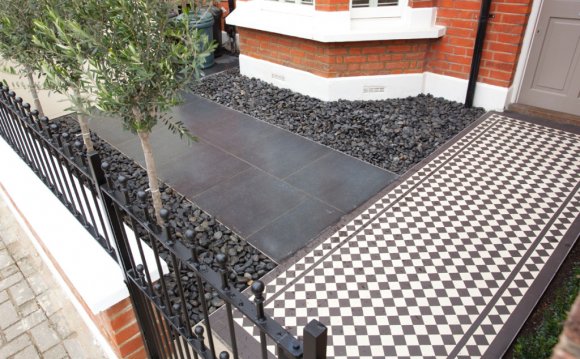
This paper determines the relationships between the dependent variables, presence of trees in front garden and front garden type, and socio-economic, environmental and demographic variables, at the suburb scale in Hobart, Tasmania, Australia. Garden type, largely following a pre-existing classification, and the presence/absence of trees, were recorded from 50 randomly located front gardens in each of 31 suburbs. The suburbs were classified into four groups on the basis of their spectrum of garden types and the percentage frequency of trees. Group one consisted of coastal suburbs of relatively high socio-economic status. Group 2 consisted of suburbs of moderate socio-economic status. Group 3 consisted of the poorest suburbs. The fourth group was composed of suburbs of high socio-economic status, located close to the centre of the city in hilly terrain. All except the rarest garden type occurred in all four groups of suburbs. Multiple regression and general linear models were used to predict tree presence, and the prevalence of particular garden types at the suburb level. Household income was the best predictor of the percentage frequency of trees in front gardens. The variables that appeared in models for garden types were: the percentage of the population with tertiary education (four instances); percentage of population older than 65 years (4); household income (3); percentage of households renting dwellings (3); altitude (3), rainfall (3); unemployment rate (2); percentage of population born in Australia (2); percentage of medium-sized gardens (2); suburb age (1); percentage of workforce in professional and managerial occupations (1). The 12 garden types that could be modelled responded individualistically to these independent variables.
Keywords
- Garden floristics;
- Garden structure;
- Front yard;
- Suburban;
- Tree cover;
- Treelessness
Copyright © 2006 Elsevier B.V. All rights reserved.
Jamie Kirkpatrick is Professor of Geography and Environmental Studies at the University of Tasmania, where he has worked since 1972. He is a geographer and ecologist who has made a substantial contribution to conservation ecology and planning. Apart from work on domestic gardens, his major current research projects are on the role of the interaction of fire and grazing in vegetation dynamics, and the interactions between people, sheep and nature in Tasmania.
Grant Daniels is currently undertaking a PhD in Environmental Studies at the University of Tasmania on the effects of peri-urban development on native species. He has a particular interest in the ecology and conservation of avifauna.
Tad Zagorski is currently undertaking a PhD in Environmental Studies at the University of Tasmania on stewardship in gardening practice. He has a background in horticulture.















